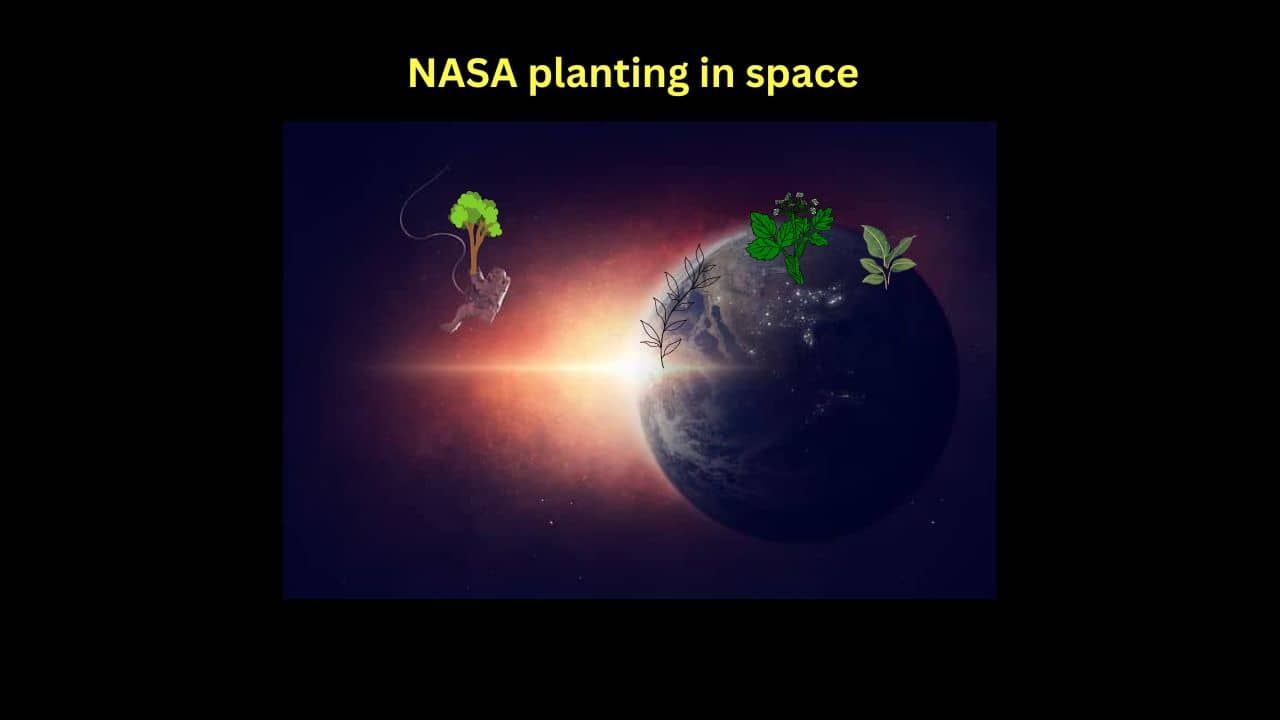Yes, it is true that NASA is growing plants in space and in this post I will explain which NASA plants in space are growing, the reason to do that and the difficulties.
How NASA growing plants in space names & reason
NASA is carrying plants in their space shuttle and according to them they want to bring plants to space for both aesthetic and practical reasons. According to the space agency, their pioneering astronauts already told them that fresh flowers and green gardens on the International Space Stations (ISS) create a beautiful atmosphere and they feel that they are taking a little piece of earth with them.
Plants are good for positive energy, and psychological well-being on Earth and also in space. Green plants are important for keeping astronauts healthy during long durations in space capsules and space stations.

Reason
Currently, NASA astronauts receive a wide variety of frozen, dried and pre-packed meals in space stations. When a crew ventures into space for years without resupplying the vitamins in prepackaged form break down and give problems to astronauts’ health. To overcome this kind of problem Nasa is searching for different ways to provide nutrients to astronauts for long lasting in an easily absorbed form.
They want their astronauts to have fresh-grown fruits and vegetables but how to do that without sunlight and earth’s gravity? It is really a big challenge for one of the finest space agencies NASA.
Read this – Agriculture science research school dream project
Veggie space garden
Veggie stands for a vegetable production system. It is a space garden residing on the space station. The motive of veggies is to help NASA in studying plant growth in the microgravity atmosphere. It also adds happiness among astronauts by adding fresh food to their diet. The size of the veggie garden is very small and it can be carried as a small piece of luggage.
The veggie garden holds 6 plants and each plant grows in a pillow. The pillow is filled with clay-based growth media and fertilizer. Pillows play an important role to distribute water, nutrients and air in a healthy balance around the roots. Pillows protect the roots otherwise they may drown in the water or engulfed by air.
NASA plants in space
Veggie successfully grew 3 types of lettuce: Mizuna mustard, cabbage and Red Russian Kale and Zinnia flowers.
Light emitting diodes bank
In the earth’s gravity absence plants use other environmental factors such as light, to orient and guide growth for their growth. Light-emitting diodes bank (LEDs) above the plants produce the spectrum of light suited for the plants’ growth.
Read it – Farmers canteen required
Advanced plants habitat
Advanced plant Habitat (APH) is a growth chamber in the station for plant research. APH uses LED lights and porous clay with controlled-release fertiliser and delivers measured water nutrients and oxygen to the plant roots.
Biological research in canisters
Biological research in canisters or BRIC is Used to study the effect of space on organisms such as yeast and microbes. BRIC-LED is the latest version and this technology adds light-emitting diodes to support biology. BRIC helps plants, algae, mosses and cyanobacteria that require light for the food-making process.
FAQ
Tell me is there a plant growing in space?
Veggie, Advanced Plant Habitat and BRIC-LED are used to research and grow plants in space and stations.
Why is NASA growing plants in space?
Vitamins in prepackaged form break down during the long travels for years and astronauts face health problems. NASA wants to provide fresh fruits and vegetables to their astronauts.
Tell me is NASA growing plants on Mars?
Mars’ open air is too cold for plants to survive. Still, NASA plant scientists are studying how to grow potatoes in hydroponic solutions and this technique is expected to be used by astronauts on Mission Mars.
What are the problems in growing plants and space?
Lack of air reduces plant growth and life.
Little overwater can kill plants.
Struggle to fend off pathogens.
What is the first vegetable to be grown in space?
In 1995 Potato was the 1st vegetable to be grown in space. Some other vegetables grown in space are Onions, peas, lettuce, radishes, wheat, garlic, cucumbers, parsley and dill.
What is the first plant to be grown in space?
1982 Arabidopsis were grown by using Fiton 3 experimental micro greenhouse. It was an experiment conducted by the Soviet Salyut 7 space station.
What are the space plants’ names?
Veggie grew Mizuna mustard, cabbage and Red Russian Kale and Zinnia flowers. The space plant list is given below:
Kalanchoe.
Lettuce and Cinnamon basil.
Cabbage.
Flax.
Arabidopsis
Zinnia hybrida.
Sunflower.
Ceratopteris richardii.
Bok choy.
Super dwarf wheat.
Apogey wheat.
Brassica rapa.
Rice.
Tulips.
Vegetables – Onions, peas, lettuce, radishes, wheat, garlic cucumbers, parsley, potato and dill.
Read more
Earth day theme invest in our planet